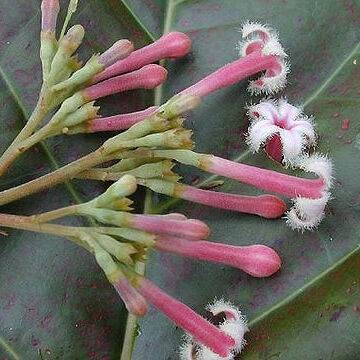Trees or shrubs. Leaves petiolate; stipules interpetiolar, free, mostly decid-uous, glandular at the base. Inflorescences terminal, paniculate, the branches mostly opposite. Flowers 5-merous, the hypanthium pubescent, the calycine cup turbinate, the lobes 5, mostly reduced; corolla variable in color, hippocrateriform, pubescent outside, glabrous within, the lobes valvate; stamens partly exserted or included, the anthers slender, dorsifixed; ovary 2-celled, the ovules numerous, imbricate, attached peltately to a spongy placenta, the style slender, the stigmas 2, obtuse; ovarian disc pulviniform. Fruits capsular, mostly ovoid oblong, sep-ticidally dehiscent, opening from the base; seeds numerous, winged.

